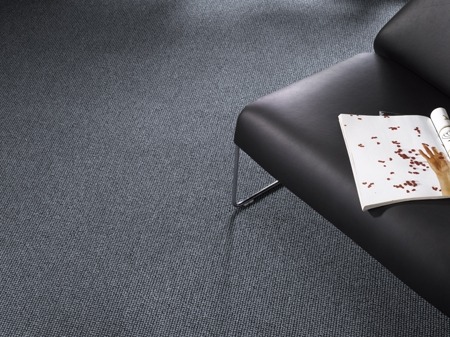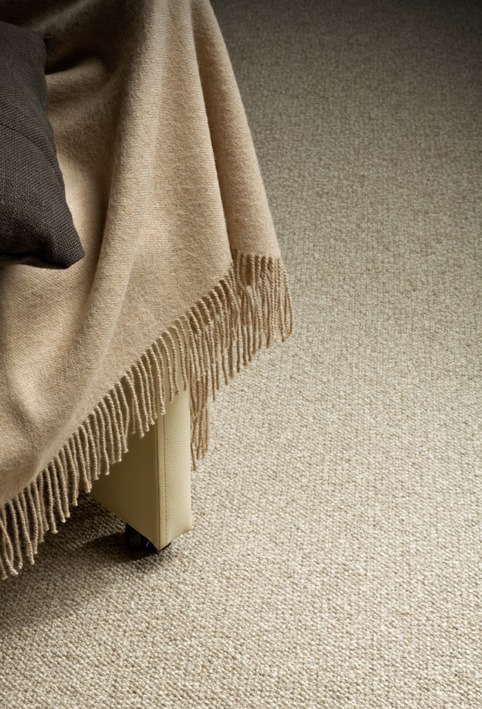
Carpet care and cleaning
The following hints on carpet maintenance will add considerably to the carpets life.
VACUUMING
Regularly vacuuming (3x a week) is recommended so that soil does not become embedded in the pile causing accelerated wear by finding at the base of the tufts.
There are three types of vacuum cleaners : plain suction, beater bar, revolving bristle strip. For loop pile carpets, use a plain suction at the start. A revolving bristle can be used later. It will restore the carpet and take away wool pills.
CLEANING
If you have taken care to vacuum your carpet regularly and remove spills, you may not need to clean your carpet for a year or more, even if it is a light colour. However, when the carpet does start to look soiled, you can either have it professionally cleaned or do it yourself. If you decide to clean the carpet yourself, make sure you use a good quality cleaning agent and carefully follow the manufacturer’s instructions. No matter how careful one is, there is usually a small residue left on the pile after drying and the residue from a poor quality cleaning agent accelerates soiling.
ABSORBENT POWDER
There is a range of cleaning powders available which are either solvent-saturated or detergent-saturated.
After vacuuming, the powder is sprinkled liberally on the carpet, brushed into the pile an then vacuumed out. The powder method is an easy way of freshening up a carpet. It also distorts the pile less and because the carpet is not wetted, the room is ready for re-use sooner.
AEROSOL FOAM SHAMPOO
For light cleaning of small areas, aerosol foam shampoos can be used. It is advisable to test the shampoo first for sticky residu which may attract dust. Foam is usually sprayed sparingly on to the carpet and worked into the pile with a moistened sponge or brush.
Vacuum after the carpet is dry.
Shading
Liability: In view of the fact that the manufacturer cannot exert influence to prevent the phenomenon of shading, he cannot be held responsible for any occurrence.

Stains
FACTORY CLEANING
Professional factory cleaning is ideal for rugs and carpet squares because all the dirt can be effectively removed. It is not as suitable for wall-to-wall carpet as onsite cleaning because of the inconvenience and expense of removing and refitting the carpet.
WOOLCARE STAIN TREATMENT for CARPETS
TREATMENT (CLEANING AGENT)
1) Solution of one teaspoon of approve wool detergent (e.g. Softly) with one teaspoon of white vinegar and one litre of warm water
2) Dry-cleaning fluid, lighter fuel or mineral turpentine.
Caution : Ensure that no flame or lighted cigarette is near, and use in well-ventilated area.
3) Mineral turpentine effectiveness is increased if mixed with an equal quantity of dry-cleaning fluid.
Caution : Ensure that no flame or lighted cigarette is near, and use in well-ventilated area.
4) Methylated spirits.
Caution : Ensure that no flame or lighted cigarette is near, and use in well-ventilated area.
5) Hydrogen peroxide (20 vol.). Dilute 1 part to 10 parts cold water.
Caution : Do not use on dark or patterned fabric.
6) Dye stripper. Dilute 1 part to 50 parts cold water.
Caution : Do not use on dark or patterned fabric.
7) Chewing gum remover (freezing agent).
8) Nail polish remover.
9) Clean warm water.
10) Cold water.
11) Weak solution of white vinegar or lemon juice with cold water.
12) Absorbent powder (e.g. salt or talc). Sprinkle on spillage, leave overnight and vacuum the next day.
NOTES :
· When attempting to remove any stains always ensure that the fabric is dry before proceeding to the next step in order of treatment.
· The solvents normally used in dry cleaning are perchlorethylene, white spirit or fluorocarbons.
Note : Whilst this advice is offered in good faith, no responsability is accepted for claims arising from the treatments proposed. It stains fail to respond to
treatments listed, call a professional fabric cleaner immediately.
A STEP-BY-STEP CLEANING GUIDE
To make sure that your wool carpet keeps its good looks as long as possible, it is essential to maintain a regular cleaning schedule including the immediate
removal of spillages to prevent carpet stains. Prompt action is important in order to avoid the spillage penetrating the pile fibres and becoming fixed. Therefore, a daily check of the carpet is recommended. Stain removal kits can often be obtained from carpet retailers, or you can make up your own which should contain the following items :
a) a carpet shampoo for removing water-based stains
b) a solvent for removing greasy stains
c) a chewing gum remover (freeze or solvent type)
d) special stain removers for ink, fruit juice, coffee, etc.
e) white tissues for mopping up spills
f) small sponges for applying shampoo, solvents, etc.
When spills occur, it is important that they are cleaned up immediately !
Here is a guide to help make your job easier.
Step 1 – Scoop up solids with a knife or spoon.
Step 2 – Blot up liquids by applying pressure with white paper towels or tissues.
Step 3 – Determine method of stain removal from the chart.
Step 4 – Before treating stain, test treatments on an inconspicuous part of the
carpet for possible colour change.
Step 5 – With blotting or dabbing motion, work inwards from the edge of the
stain to prevent it spreading.
Step 6 – Do not rub carpet pile during the stain removal or rinsing stages.
Step 7 – When attempting to remove stains, ensure that the carpet is dry before
proceeding to the next step in order of treatment.
Step 8 – Rinse by applying clear, tepid tap water using a clean cloth or sponge.
Step 9 – Once the stain has been removed, blot up moisture by applying
pressure with white paper towels or tissues.
Step 10 – Do not walk on carpet untill dry.
Woolcare stain treatment for Carpets
Type of stain Order of treatment 1st 2nd 3rd:
Beer 1
Beetroot 1
Bleach 1
Blood 10 6
Burn or Scorch Mark 5
Butter 2 1
Candlewax 3
Chewing Gum 7
Chocolate 1 2
Cocoa 2 10 1
Coffee (black or white) 2 10 1
Cooking Oils 2 1
Crayon / Colour Marker 2 1
Cream 2 1
Egg 1
Excrement 1
Fruit Juice 9 1
Furniture Polish 2 1
Grass 4
Gravy / Sauce 9 1
Grease 2 1
Ice Cream 1
Ink - ballpoint 4 1
Ink - fountain pen 9 1 6
Lipstick 2 1
Metal Polish 2 1
Mildew 1 5
Milk 9 2 1
Mustard 1
Nail Polish 8 2
Oil 2 1
Paint - emulsion 2 10 1
Paint - oil base 3 2 1
Rust 2 1 11
Salad Dressing 2 1
Shoe Polish 2 1
Soft Drinks 9 1 5
Tar 3 2 1
Tea (black or white) 2 10 1
Urine 1
Vomit 1
Wine - red 12 9 6
Wine - white 1